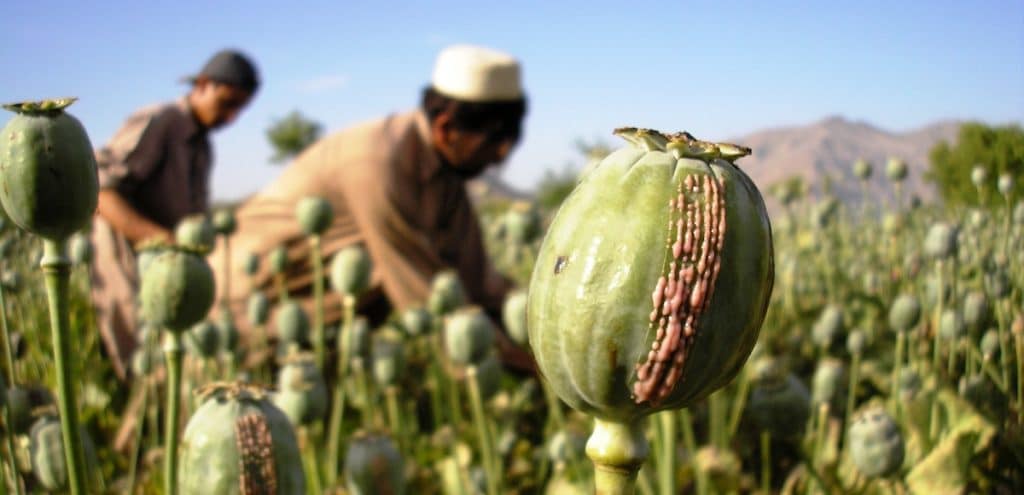

Last week, President Donald Trump declared the U.S. would withdraw military troops from Syria, and he did so without the consent of his more hawkish advisors.
Many in the Trump Administration are concerned a similar announcement regarding Afghanistan is imminent. That includes General James Mattis, who will leave his post as secretary of defense by the end of February.
The longest war in U.S. history began almost immediately after the attacks on September 11, 2001. President Trump has long-criticized continued U.S. involvement, and as a candidate campaigned on prioritizing illicit drug trades over foreign intervention.
After more than 17 years – deploying at peak more than 100,000 troops, sacrificing the lives of nearly 2,400 U.S. soldiers, spending more than $1 trillion on military operations, more than $100 billion on “nation-building,” or funding and training an army of 350,000 Afghan soldiers – opium production in Afghanistan has never been more robust than it was last year.
The annual opium survey from the U.N. Office on Drugs and Crime (UNODC) for 2017 found a record high 9,000 metric tons for the year, rising 87% compared with 2016.
“Increased insurgency and funding to terrorist groups is likely within Afghanistan while more high quality, low cost heroin will reach consumer markets across the world, leading to increased consumption,” the UNODC wrote in the report.
Blaming the Taliban for illicit opium production and trade in Afghanistan has become the common narrative for western corporate big media. But it conveniently omits the fact the trend was headed in the right direction prior to the invasion by U.S. and coalition troops.
Prior to 2001, Afghanistan had already been the world’s leading illicit opium producer, having claimed that title since 1992.
However, former Taliban leader Mullah Mohammed Omar declared growing papaver somniferum, more commonly known as opium poppies, to be un-Islamic in July of 2000.
The result was one of the world’s most successful anti-drug campaigns ever waged. That’s no small part due to how the Taliban enforced the ban on poppy farming, which was via threats, forced eradication and public punishments.
But Afghanistan saw a 99% reduction in the area of opium poppy farming in Taliban-controlled areas, which represented roughly 75% of the world’s supply of heroin at the time.
In 2001, Afghanistan produced approximately 180 metric tons of opium. Only one year after the allied invasion, opium production swelled to more than 3,000 metric tons a year.
According to U.N. estimates dating back to 2010, opium harvested in Afghanistan produces more than 90% of the world’s illicit heroin, and more than 95% of the illicit supply bound for Europe.
Those are outdated estimates, to be sure.
The 2017 UNODC annual report, which hasn’t yet been released for 2018, cited a rapid expansion of the areas used to cultivate poppies and an increase in the average yield per hectare.
While provincial governors claimed to have eradicated roughly 750 hectares used for poppy cultivation, more than twice as much as the previous year, it pales in comparison to production growth.
Areas under cultivation hit a record 328,000 hectares, up over 60% from the previous year. The average yield per rose by 15%, with Southern and Northeastern regions experiencing the largest growth.
Point being, these expansions occurred right under the noses of U.S. and allied forces, despite Barack Obama and Donald Trump both deciding to postpone troop withdrawals.
Mr. Obama’s postponement was indefinite. Mr. Trump’s was not. Nevertheless, it is widely known that he unchained U.S. commanders, and yet illicit opium production has continued to increase.
Increased opium production in Afghanistan has resulted in the scourge of addiction at home and epidemics abroad in the U.S. and Europe. A 2013 UNODC report estimated — though most drugs are smuggled abroad — there were 1.3 to 1.6 million drug addicts in Afghanistan.
In Helmand Province, the very building used as the office of the British Provincial Reconstruction Team — which dispersed millions of dollars in nation-building aide — is now a depressing and dark facility for recovering drug addicts.
“Now, the base is barren; stripped of everything of value,” Sune Engel Rasmussen in Lashkar Gah, wrote for the Guardian in 2017. “Occasional moans reverberate down the corridors where gaunt-looking men sleep, belly-down, seeking respite from the sun beating through the windows.”
“All of them are recovering drug addicts.”
More than half of the nation’s opium poppies are grown in Helmand, where the number of women who suffer from addiction is growing rapidly. Females cannot currently find treatment, a problem provincial officials also blamed on too few resources.
Since 2001, the U.S. alone has spent at least $8.6 billion specifically to combat opium production in Afghanistan. Meanwhile, nearly all attempts to introduce alternative crops during the same period, have failed.
The most damning journalistic sin committed by the media during the era of Russia collusion…
The first ecological study finds mask mandates were not effective at slowing the spread of…
On "What Are the Odds?" Monday, Robert Barnes and Rich Baris note how big tech…
On "What Are the Odds?" Monday, Robert Barnes and Rich Baris discuss why America First…
Personal income fell $1,516.6 billion (7.1%) in February, roughly the consensus forecast, while consumer spending…
Research finds those previously infected by or vaccinated against SARS-CoV-2 are not at risk of…
This website uses cookies.